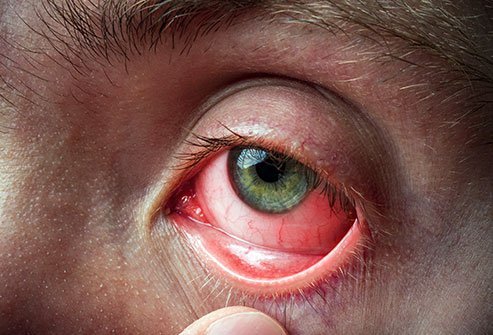What Are the Best Treatments for Allergic Conjunctivitis?
What is allergic conjunctivitis?

Allergic conjunctivitis is the medical term for an eye allergy. It develops when your eyes come into contact with something you’re allergic to. When that happens, your body releases chemicals called histamines.
Histamines cause swelling in the blood vessels of the conjunctiva. The conjunctiva is a clear layer of tissue that lines the eyelids and covers the whites of the eyes. When an allergic reaction causes your conjunctiva to swell, you might experience symptoms like:
- Redness
- Itchiness
- Burning
- Watery eyes
- Swollen eyelids, especially in the morning
- Feeling like you have a piece of dirt or grit in your eye
People of any age can get allergic conjunctivitis. You may be more prone to it if you have family members with allergies.
How do you know you have allergic conjunctivitis?
Several conditions can make your eyes itchy, red, and swollen. An infection causes similar symptoms, but it usually starts in one eye first before spreading easily to the other. Allergic conjunctivitis typically causes symptoms in both eyes.
Here are some other signs that your eye symptoms may happen because of an allergy:
- Your symptoms come back when pollen or mold counts are high
- You have other symptoms of allergies including runny or stuffy nose
- The discharge from your eyes is clear and stringy
Only a medical professional can tell you if you have allergic, viral, or bacterial conjunctivitis. To make a diagnosis, your doctor will probably talk with you about your symptoms, including what they feel like and your history with them. The doctor will also examine your eyes.
Diagnosing allergic conjunctivitis usually doesn’t require a lab test. If your doctor thinks you may have an infection and not an allergy, they may take a sample of the discharge from your eye and send it to a lab.
If your doctor does suspect an allergy, they may order a skin prick or other allergy test to identify what you’re allergic to. This is more commonly done if your allergic conjunctivitis hasn’t responded to treatment.
Treatments of allergic conjunctivitis
The most effective way to handle allergic conjunctivitis is to avoid contact with allergens, which are the substances that trigger your symptoms. If you do have symptoms, over-the-counter or prescription treatments may help.
Medications
To treat your allergic conjunctivitis, your doctor may prescribe eye drops with antihistamines. Commonly prescribed drop medications include:
- Emedastine difumarate
- Epinastine
- Azelastine ophthalmic
- Cetrizine ophthalmic
Some prescription antihistamine drops also include mast cell stabilizers. Mast cells are cells in the body that have extreme reactions to substances that aren’t harmful on their own. This reaction is what starts an allergic reaction.
Mast cell stabilizing drops with antihistamines can help prevent an allergic reaction. They work best when you take them before possible allergen exposure. You can only get them by prescription. Drug names include:
- Lodoxamide tromethamine
- Olopatadine
- Ketotifen
- Nedocromil ophthalmic
If you have a severe eye allergy, your doctor may prescribe eye drops that contain a mild steroid. Steroids are chemicals that doctors sometimes recommend to reduce swelling.
You’ll usually take steroid drops for less than two weeks. If your symptoms affect more than just your eyes, you may need to take a prescribed oral antihistamine or steroid.
Home care and remedies
If you have eye allergies, you can take steps at home to reduce your contact with allergens. For example:
- Avoid rubbing or touching your eyes
- Avoid exposure to smoke
- Wash your hands frequently
- Wash your pillowcases and sheets in hot water and detergent
- Use a vacuum with an asthma- and allergy-friendly filter
- Keep your windows closed when mold and pollen counts are high
- Wear sunglasses and a hat outdoors
There are also home treatments you can try if symptoms do arise. You can try:
- Applying cool compresses to your eyes to relieve discomfort
- Using saline eye drops to wash away allergens
- Taking over-the-counter antihistamine medication (orally or in eye drop form)
Complications and side effects
By themselves, eye allergies have no serious complications. There may be some side effects from medications used to treat those allergies.
For example, people who take mast cell stabilizers sometimes report side effects like:
- Sensitivity to light
- Eye irritation
- Headache
- Stinging when the drops are applied
Antihistamine drops may cause redness to increase if you use them for more than five days. This is known as a rebound condition. The only way to treat these rebound symptoms is to stop using the drops.
Steroid medications have possible side effects as well. These include infection and increased pressure inside the eye. These side effects are why experts recommend steroids only for short-term use.
The potential side effects differ among different types of medication. Talk to your healthcare provider about the best treatment for you.
